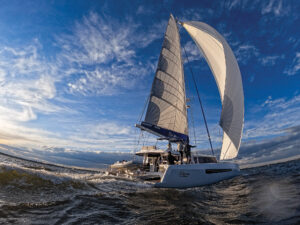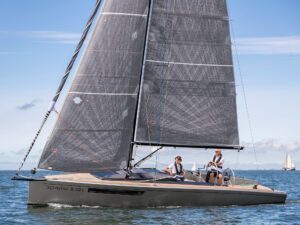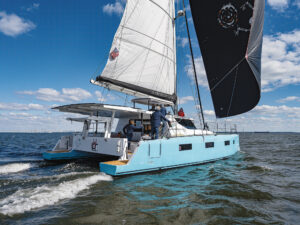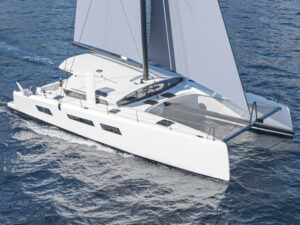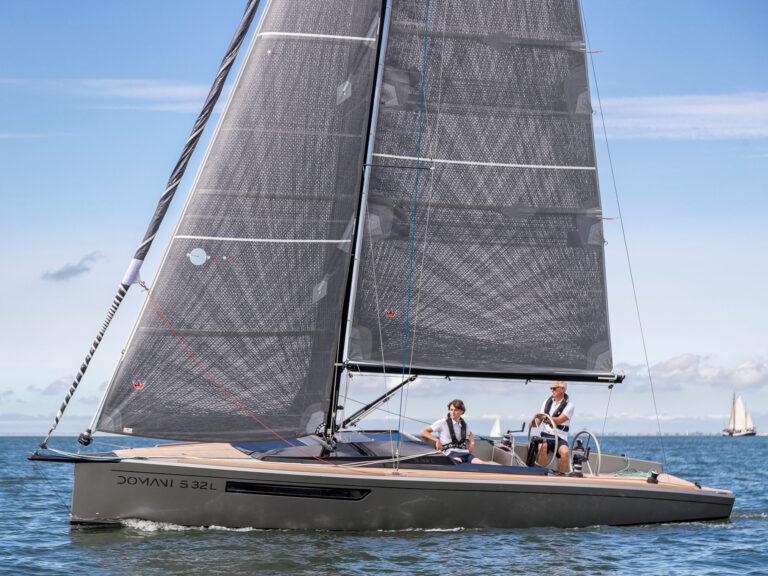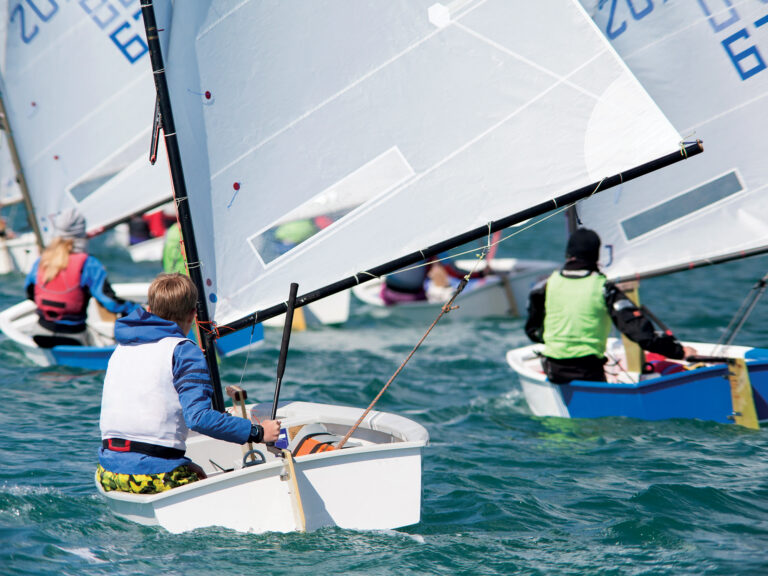
Like father, like son. In 1984, J/Boats launched its first cruising sailboat, the J/40, designed by company founder Rod Johnstone. Right out of the box, it was named Best Domestic Cruiser by our sister publication, Sailing World (Cruising World had not yet launched a Boat of the Year program of its own). That boat had a 10-year production run, with 86 hulls launched. It was a popular family boat and, at the same time, successful in notable events such as the Newport Bermuda Race and the Chicago Yacht Club Race to Mackinac.
Fast-forward 40 years, when the company introduced another 40-foot cruiser, this one designed by Rod’s son, Alan Johnstone. Again, right out of the box, the all-new J/40 landed atop the podium, this time as Cruising World’s Best Full-Size Cruiser 40 to 45 Feet and Best Boat Overall.
While it will take time to assess the longevity of its production run, it’s notable that before Hull No. 1 had hit the water, 15 orders had been taken, according to the younger Johnstone, who showed us through the boat dockside and later sailed with our judges on Chesapeake Bay.
J/Boats has been at it since 1976, when Rod designed and built the first J/24 in his garage. A wide range of designs followed, from high-performance one-designs and cruiser-racers to dedicated offshore cruisers, with design and corporate duties eventually handed down to the present generation of Johnstones. The J/40 was developed at J Composites in Les Sables d’Olonne, France, led by sailor and boatbuilder Didier Le Moal. French designer Isabelle Racoupeau was brought in for interior elements. The result is a boat that is easily driven and exhilarating to sail—and practical yet elegant below.
Lots of daylight pours in through ports overhead and in the hull and cabin top, lighting up the white interior along with the oak woodwork and furniture. Some of this woodwork is solid, while structures such as the main bulkhead are an infused composite sandwich of veneer and Corecell foam, which helps keep weight under control.
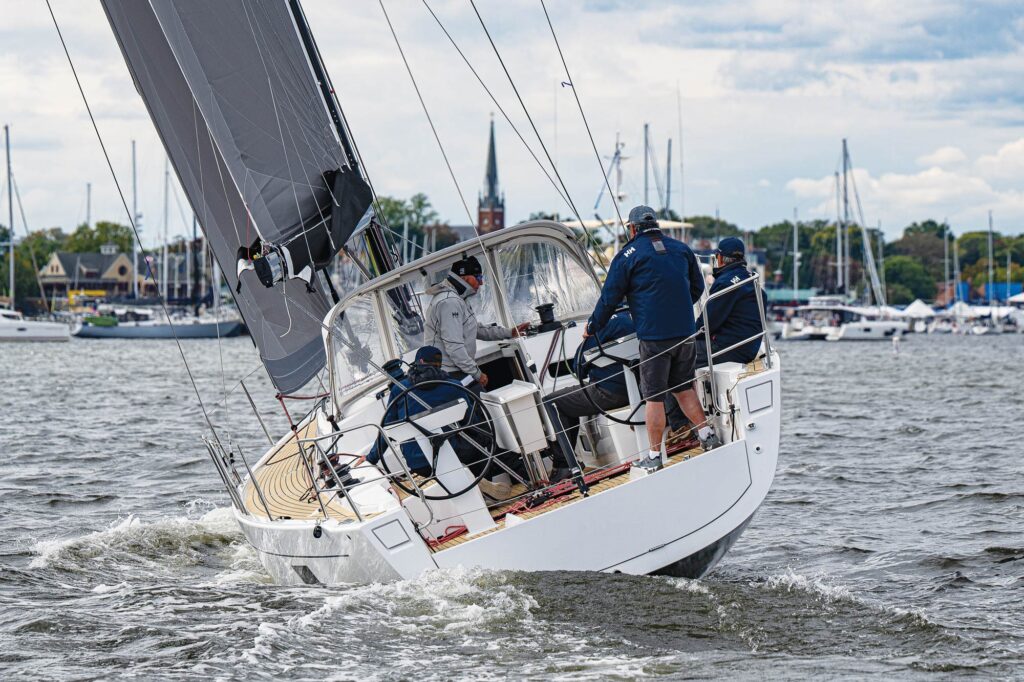
Hull No. 1 has a traditional layout with double-berth staterooms aft on either side of the companionway. The salon has a galley to port and a nav desk opposite. Amidships, there’s a dining table to port and a settee to starboard. A single head and shower compartment, and a third stateroom with a V-berth, are forward of the mast. These arrangements would work well for a family or for a skipper who plans to sail distance events with multiple crew.
Two staterooms and two heads are an option too. In this layout, the starboard stateroom aft is replaced by the second head, with lots of stowage abaft it. This version might appeal to a couple with lots of gear and occasional friends aboard.
Base price for the J/40 is right around $500,000. The boat we got aboard in Annapolis ran closer to $650,000 with air conditioning, electronics and the like. Standard power is a 50 hp Volvo diesel with a straightforward and reliable AGM lead-acid-battery bank.
The 40’s fiberglass hull, deck, structural grid and main bulkhead are vacuum-infused using a Corecell foam core, which, again, reduces weight. The boat has a couple of options when it comes to the keel: either the standard 7-foot-3-inch lead foil or a 5-foot-11-inch shoal version. The rig on Hull No. 1 was carbon-fiber, with an air draft of 63 feet, 10 inches.
Johnstone designed a generous sail plan, with rod rigging and a high-aspect mainsail that is the primary source of power. The goal was to have the boat sailing close to windspeed in 8 knots of breeze yet be able to dial things back when conditions get sporty. The standard non-overlapping jib is easily sheeted home when tacking, and sheets are led through floating in-haulers on the cabin top, giving the jib trimmer more control over the shape of the sail. There is also a bowsprit for flying a code sail or an asymmetric chute.
The J/40’s main sheet is double-ended and led below to Harken winches adjacent to each of the twin wheels. Also close at hand to the helmsman are controls for the hydraulic backstay and the traveler mounted in the cockpit sole. Another pair of Harken winches sit forward on either coaming, giving the crew room to work. Two more—one is electric for raising sails—are on the cabin top, where halyards, reef lines and such are led.
The cockpit itself is roomy, and it was easy to move about when we sailed. And as you might expect, it was when we hoisted the sails that the J/40 really lit up. The Lewmar steering was as smooth as butter, and the single rudder remained easily in control when puffs came along. The traveler kept the helm well-mannered, and sightlines all around were excellent.
In mostly 15 knots or so of breeze, the J/40 danced along at 8.3 closehauled, and the feeling of slicing through the water was magical.
My only complaint? Our sea trial ended way too soon.

